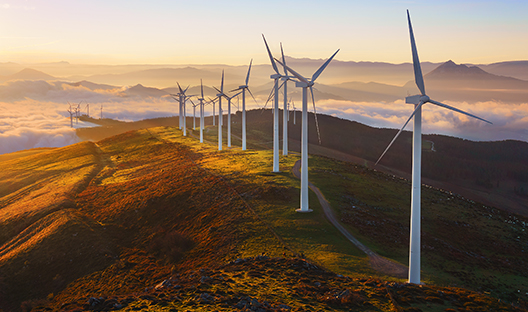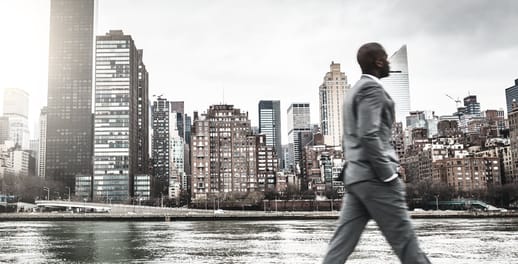Get Focus insights straight to your inbox
Achieving the 2030 UN Sustainable Development Goals (SDGs) will improve the lives of billions of people, with SDG 11: Sustainable Cities and Communities at the heart of this agenda. Cities are complex systems, and their planning requires a systems-thinking approach that looks at the interconnected impacts of all the parts. They are affected by society, as well as by the economy, environment and culture. As we begin to comprehend how vulnerable we are as a species and acknowledge how reliant we are on our limited natural resources for our survival, cities around the world are being redesigned to become smarter and more sustainable.
The ultimate goal for urban sustainability should be to promote and enable the long-term well-being of people and the planet. In the development of sustainable cities, we need to ensure we consider the full spectrum of the United Nations Sustainable Development Goals (SDGs): The efficient use of natural resources (SDG15); together with urban planning, efficient transport systems, clean water and sanitation (SDG6); the provision of healthcare (SDG3); the responsible management of waste (SDG12); disaster risk reduction, economic opportunity (SDG8); connectivity and access to information (SDG9); affordable housing and student accommodation (SDG4); and capacity-building. These are all relevant issues when developing a sustainable roadmap for cities and urban developments.
The ultimate goal for urban sustainability should be to promote and enable the long-term well-being of people and the planet.
When considering SDG13: Climate Action, the built environment has a major impact on carbon emissions, which continue long after construction is complete, predominantly because of the fossil fuels we burn for the energy we need to heat and cool our homes, offices, factories and commercial properties. This is where SDG9: Industry, Innovation and Infrastructure, has an important role to play. Green building design requires innovation to incorporate climate resilient infrastructure and we are seeing more and more creative green building products such as pollution-absorbing bricks and self-healing concrete. Across both the residential and commercial sub-sectors, technology has had a significant impact on real estate properties in terms of design, material composition, safety, management and construction methodologies. For example, green walls and vertical gardens along with green roofs are all hallmarks of green buildings that help minimise heating and cooling costs, prevent storm-water runoff, filter out pollutants and accordingly reduce energy use and cost.
Technology advances in delivery systems and logistics, warehouse storage and 3D printing will also play transformative roles in how we purchase products and how goods are manufactured, stored and distributed. While technology cannot solve for all problems, it is helping to make real estate more sustainable and healthier (let’s not forget SDG3: Good Health and Well-being) for its occupants. While the main purpose of adopting green and sustainable architecture is nature-driven, the indirect effects this approach can have on society and communities is revolutionary.
Considering the large contribution that the real estate sector makes to energy consumption and greenhouse gas emissions, ensuring that buildings have access to clean and renewable energy (SDG7) is vital when implementing sustainable building practices. For example, the Investec Property Fund continues to invest in renewable energy to reduce reliance on the grid, minimise negative environmental impact and decrease costs. Since 2016, the Fund has invested R72 million in renewable energy initiatives, resulting in a saving of 12,767 tonnes of carbon dioxide equivalent (tCO2e) in 2021. But going green is not devoid of its challenges. As real estate is inherently a capital-intensive industry with long-term objectives, developers (and hence investors) will need to find a balance between current cost, future value, design and durability of buildings, so that consumers’ interests are protected, and the environment is not depleted.
Since 2016, the Investec Property Fund has invested R72 million in renewable energy initiatives, resulting in a saving of 12,767 tonnes of carbon dioxide equivalent (tCO2e) in 2021.
Another challenge our cities and communities are facing is the lack of affordable housing and availability of student accommodation. These types of developments are required quickly and at scale in a number of cities around the world. In South Africa, the International Finance Corporation estimates a shortfall of more than 500,000 beds and has invested R150 million to develop more dedicated student housing units. And this is not just an issue for the developing economies. The same is true for the UK. The Investec Real Estate business in the UK has a specific focus on supporting the delivery of buildings with strong sustainability credentials. It supports several real estate projects including a mixed-use development with affordable housing in Richmond, student accommodation across a number of areas including Belfast, Edinburgh, Leicester and London, and a 99-studio unit student scheme in Guildford.
In conclusion, the development of sustainable cities involves many sectors. Working across sectors (SDG17) to incorporate an aligned and cohesive approach in the design and development of cities will help alleviate climate change, promote adaptation and improve public health, making SDG11 an important impact multiplier of the rest of the UN Sustainable Development Goals and will create a holistic environment where nature and people can both thrive.

Responsible Investing and Sustainability at Investec Wealth & Investment
As Sustainability is core to our fundamental investment approach, we have integrated ESG considerations into our investment decision making and broader investment process.




